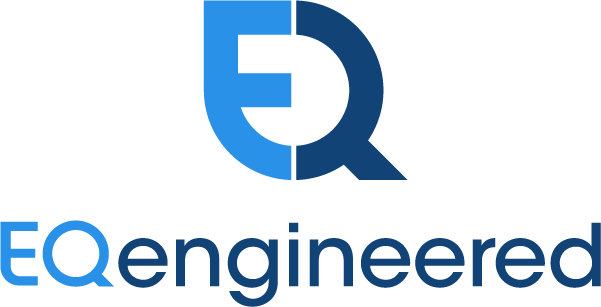Agentic AI: Enterprise Transformation to Achieve Competitive Advantage by Mark Hewitt
Introduction: A Decade Defined by Transformation
The next ten years will reward enterprises that use Agentic AI not as a short-term productivity tool, but as a catalyst for reinvention. Competitive advantage has always stemmed from the effective integration of data, technology, culture, and enterprise-wide capabilities. Today, Agentic AI amplifies these sources, transforming how work is designed, how organizations learn, and how innovation emerges at scale.
Companies that cling to incremental thinking risk missing the moment. If they “think inside the box,” they will find themselves boxed out of the biggest gains shaping the future of business. To thrive, organizations must approach Agentic AI as a strategic transformation that reshapes the entire enterprise, not just select workflows.
Sources of Competitive Advantage in the Agentic Era
Competitive advantage has always been about leveraging scarce capabilities more effectively than competitors. In the age of Agentic AI, four foundational sources stand out: data, technology, culture, and enterprise-wide capabilities.
Data as a Living Asset
Data is no longer a static resource stored in silos. Agentic systems can continuously learn from, act upon, and generate new data. This creates dynamic feedback loops that make the enterprise more responsive and intelligent. Organizations that develop strong data architectures and governance models enable their agents to surface insights and make context-aware decisions at unprecedented speed.
Technology as Intelligence
Technology is evolving from infrastructure to intelligence. Instead of serving as a passive platform, it now drives decision-making and operational execution. Agentic AI enables systems to coordinate actions, analyze complex variables in real time, and make recommendations or decisions with minimal human intervention. This shift accelerates the organization’s ability to adapt to change and unlock new value streams.
Culture as the Multiplier
Technology alone is not enough. Culture determines whether organizations adapt or stagnate. A culture that encourages experimentation, rewards learning, and tolerates responsible risk-taking will amplify the power of Agentic AI. Conversely, a culture rooted in rigidity and control will undermine transformation efforts.
Enterprise-Wide Capabilities as the Foundation
Agentic AI thrives when processes, systems, and data architectures are designed to work together. Interoperability, shared ontologies, and integrated workflows create a unified platform for scaling agentic systems. Enterprises that build these capabilities can deploy AI agents across multiple functions and business units, turning isolated experiments into transformative impact.
Reimagining Work Beyond Productivity
Agentic AI is often discussed in terms of automating routine tasks. While this is a significant benefit, the real power lies in reimagining how work itself is structured and executed.
Architecting Continuous Experimentation
Agentic AI embeds experimentation into the fabric of daily operations. Instead of treating innovation as a separate initiative, enterprises can use agents to rapidly test hypotheses, evaluate outcomes, and refine strategies. This creates a virtuous cycle of learning and improvement.
Elevating Human Roles
When agents handle routine work, employees shift their focus toward creativity, strategic thinking, and relationship-building. Rather than executing predefined tasks, they become orchestrators who guide AI systems, apply judgment, and tackle complex challenges that require human nuance.
Transforming Customer Experiences
Agentic AI enables hyper-personalized customer experiences by anticipating needs rather than simply reacting. Agents can analyze behavior patterns, contextual signals, and historical data to deliver interactions that feel intuitive and adaptive. This transforms customer relationships from transactional to deeply engaged partnerships.
Learning Culture as a Strategic Accelerator
To realize the full potential of Agentic AI, organizations must create and accelerate a learning culture that touches every layer of the enterprise. This involves teaching self, team, client, and community.
Teach Self
The starting point is individual literacy. Leaders and employees alike need to develop fluency in AI concepts, capabilities, and limitations. This enables them to identify opportunities, understand agentic workflows, and make informed decisions about where and how to apply AI.
Teach Team
Teams must learn how to collaborate effectively with both AI agents and each other. This involves rethinking how work is divided, how decisions are made, and how knowledge is shared. Teams that master human-agent collaboration become more agile, innovative, and aligned.
Teach Client
Forward-looking enterprises extend their learning culture to clients. By educating clients about Agentic AI and co-creating solutions, organizations deepen relationships and accelerate joint value creation. This positions the enterprise as both a trusted partner and an innovation leader.
Teach Community
Finally, teaching the broader community helps shape the industry ecosystem. Contributing knowledge, sharing frameworks, and leading open dialogues create standards and momentum that benefit the enterprise and its peers.
Leadership by Example
Agentic transformation requires leaders who model the behaviors they want their organizations to adopt. Leadership by example is a powerful accelerant.
Publicly Experimenting with AI
When executives openly use AI tools, integrate them into their workflows, and share their learning experiences, they signal that AI adoption is not just for technologists. It becomes part of the organizational DNA.
Encouraging Responsible Risk-Taking
Leaders must create safe spaces for experimentation. This includes celebrating learning from failures, rewarding bold thinking, and ensuring ethical frameworks guide AI development and deployment.
Setting Bold Goals
Clear and ambitious goals for AI-driven outcomes provide focus and urgency. When leaders set measurable objectives tied to business impact, they align the organization behind meaningful transformation.
Winning the Next Decade
Agentic AI represents a once-in-a-generation opportunity to redefine competitive advantage. By harnessing data, technology, culture, and enterprise-wide capabilities, organizations can reimagine work, accelerate learning, and lead by example.
Enterprises that take this strategic approach will not just compete, but shape markets. Those that stay inside the box, focusing only on incremental gains, will be left behind. The next decade belongs to those who embrace Agentic AI as the foundation for enterprise transformation and sustained competitive advantage.

